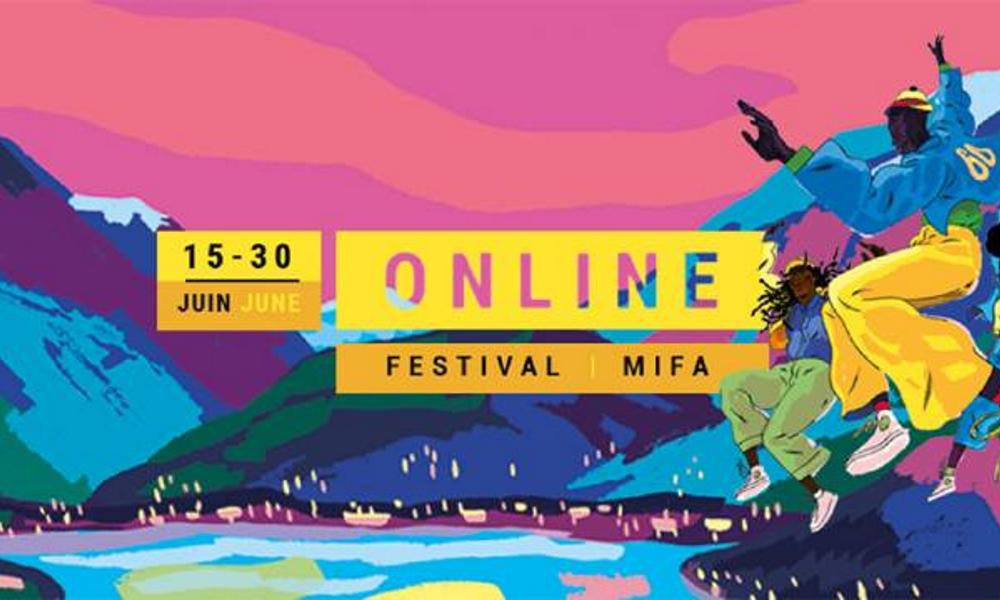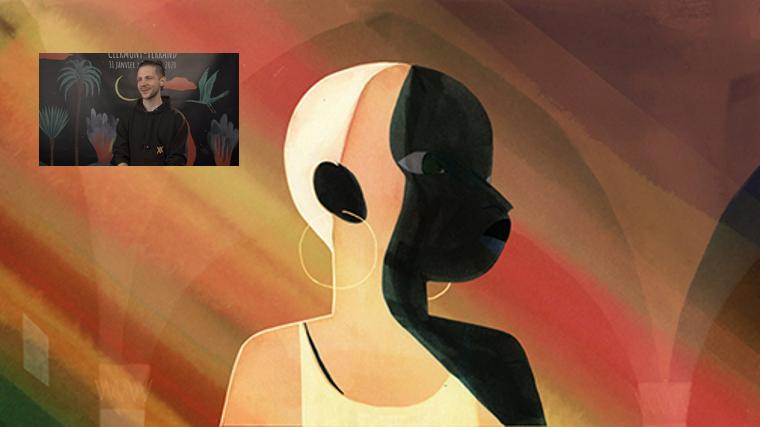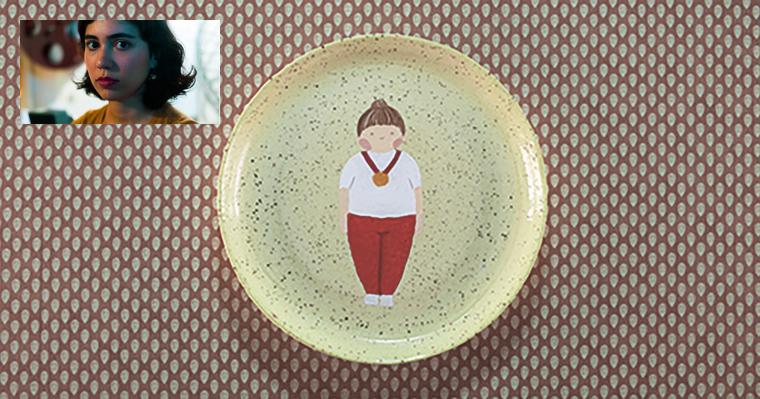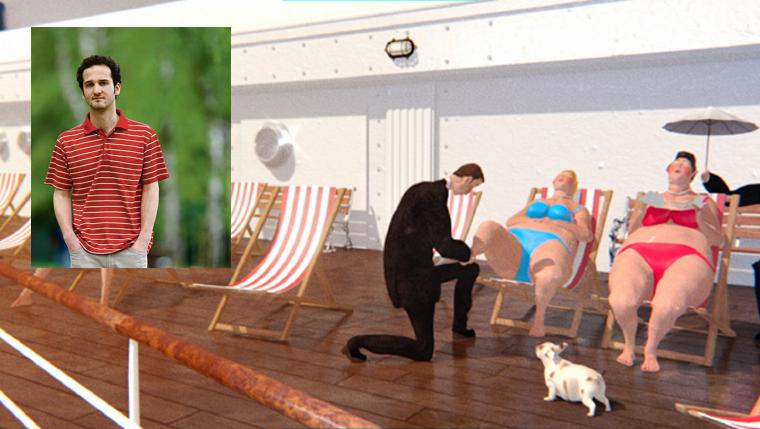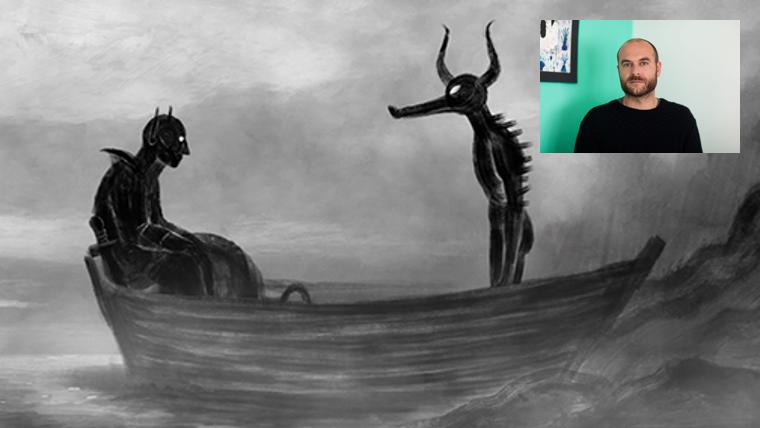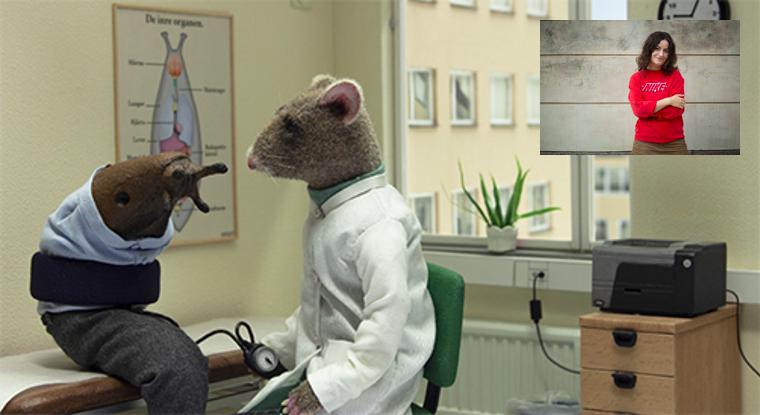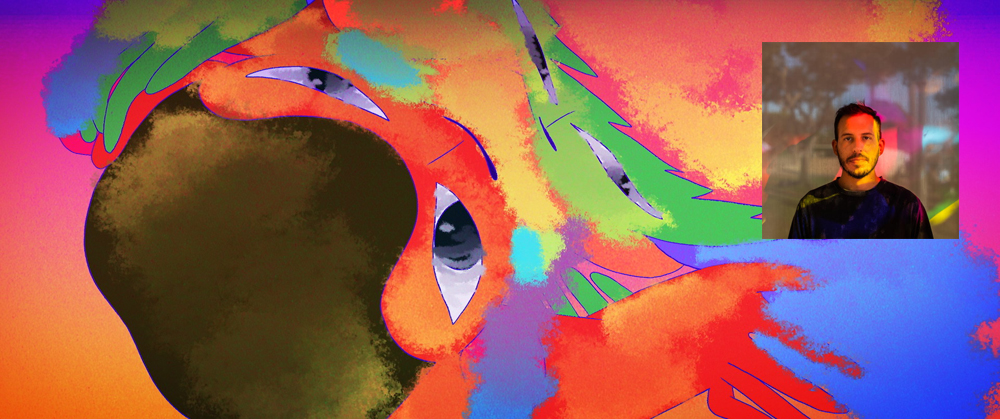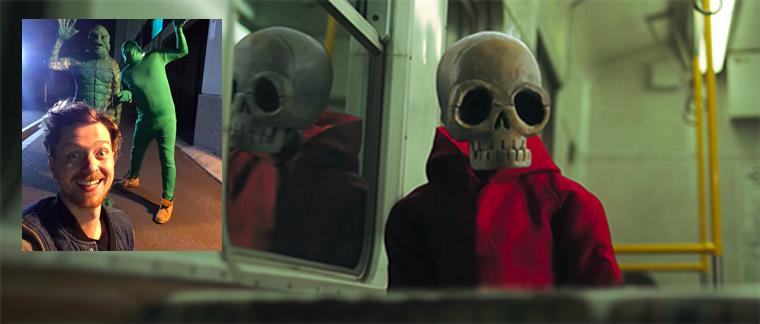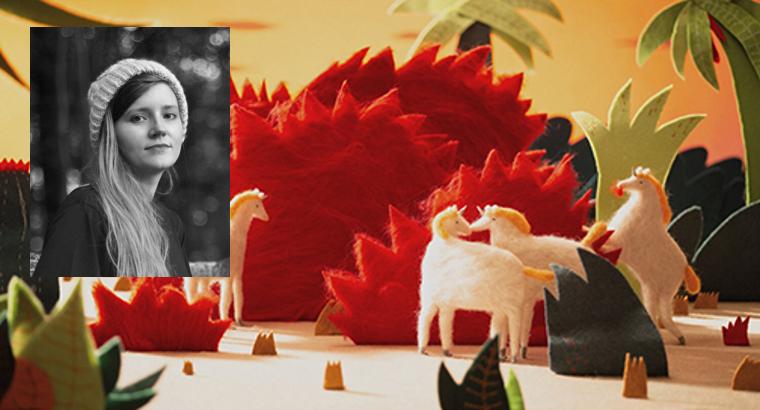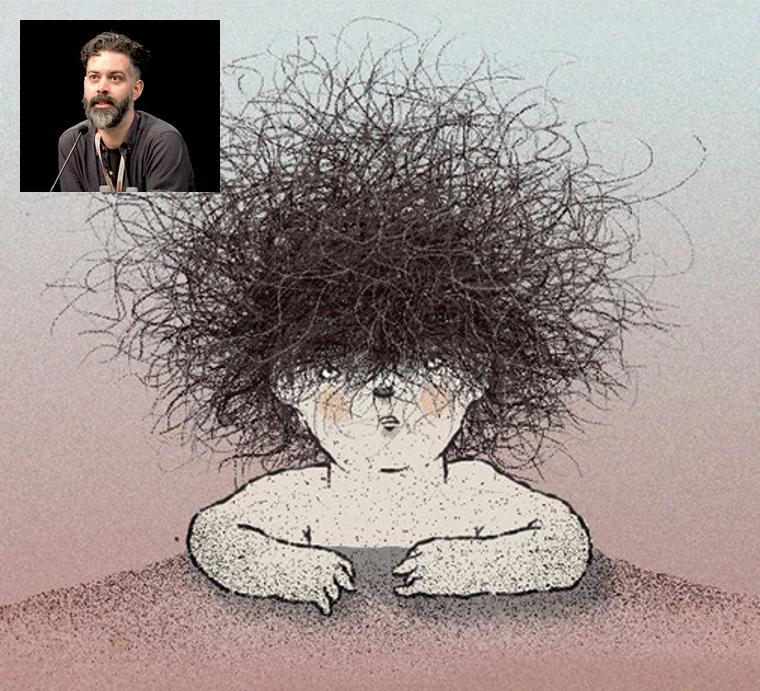***This article originally appeared in the June-July ’20 issue of Animation Magazine (No. 301)***
Due to the COVID-19 pandemic, this year’s Annecy Festival will be held online. Nothing really replaces seeing a new short with a packed house full of animation lovers, but at least the virtual version of the event provides a spotlight for many artists to showcase their work. We chatted with some of the talented directors whose shorts were selected for the Official Competition at the festival to find out more about their process, inspirations and individual stories.
You can find all the screening selections, full program and registration info at www.annecy.org.
Adrien Merigeau, Genius Loci
Adrien Merigeau was inspired to make his award-winning short Genius Loci after spending time with an Irish friend who seemed to be living a spiritual experience. “I wanted to write about different states of consciousness and about abandon, in the way that you leave a specific state in order to drift to another state, from being functioning to being useless, from the cultural to the natural, like a glass of water tipping over, and the existential change that comes with that transition,” says the talented artist, who also directed the Cristal-nominated short Old Fangs (2010) and was the art director on Cartoon Saloon’s Song of the Sea. “I was also very inspired by the American music composer John Cage, for whom all the activity of sound is considered music — it’s only the act of listening that changes. I wanted to talk about urban chaos and how it can feel like being in nature.”
Genius Loci Teaser from adrien merigeau on Vimeo.
Merigeau wrote the initial script and visual development and got the greenlight for production in 2016. It took him almost four year to finish the well-crafted short, which won the top prize at this year’s Berlin and GLAS festivals. It was produced mostly at Folimage Studio’s Valence location. The director notes, “Luckily, I was able to use their workshop to have a team of about five people working with me. I started animating on paper but quickly changed to TVPaint when the team of animators was hired, for efficiency. We then printed out all the animation frames on normal A4 paper and taped watercolor paper onto it and colored it with inks with a light table.”
He says although the process was time consuming, he loves the organic feel of the result. “I would still have liked to keep everything on paper because it feels to me that drawing on paper has a meditative feel that I don’t get on the computer, but the film was too long and we didn’t have enough time for that,” adds the director.
When asked about his biggest influences, the French helmer says, “Tomm Moore is a massive influence for me in the way that he adapts folklore to his modern visual language, and then Yuri Norstein, Stuart Hilton, When the Day Breaks by Amanda Forbis and Wendy Tilby and Cat Soup by Masaaki Yuasa would be some favorites of mine.”
For now, the director is letting the short have its own life as more people discover it at festivals this year. “In some ways my work with this film is done now and how the film lives from this moment onward is not really up to me anymore,” he admits. “But if there was one general idea that was carried through the making of Genius Loci, and that I would be happy to see radiate from it, it would be that some things don’t have to mean anything in order to give us pleasure.”
Camila Kater, Carne
When Brazilian animator Camila Kater was a young girl, she recalls her family talking about issues surrounding gaining weight and going on diets. “I lived with my mother, my aunt and my sister, and I remember being very concerned about my body at the age of six,” she says. “My personal experiences and the stories I heard from my family were the inspirations behind Carne.”
CARNE, Camila Kater, [TRAILER with English subtitles] from FREAK Independent Film Agency on Vimeo.
Kater further explains, “The idea for the ironic association between women’s bodies and the meat cooking points came from a conversation I had with my sister, Bruna Kater. We delved into Simone de Beauvoir’s discussion about how we women are seen as a body before being considered human beings — even as an object of consumption — and how this perception of the body changes according to our age, sexual orientation, race, social class, profession, etc.”
The short began pre-production in the beginning of 2018 and took about a year and a half to complete. The project is an Ibero-American co-production: Lívia Perez (Doctela) produced Carne in Brazil and Chelo Loureiro (Abano Producións) produced in Spain. Carne has five chapters, and each one is animated by a different woman animator (Kater, Giovana Affonso, Flávia Godoy, Cassandra Reis, Leila Monsegur).
“Each one of us animated our chapters in our houses in Brazil,” says Kater. “We used softwares like Dragonframe for the stop motion; Toon Boom, Photoshop and TVPaint for the 2D animation. Each chapter was made in a different medium: oil painting and objects, watercolor, 2D digital, clay and painting on the 35mm film. The idea to explore different media came after interviewing the first protagonist, Rachel Patrício, and the intention was to represent the diversity in the film and create a sensorial perception for each individual story.”
Kater says the biggest challenge was the documentary nature of the project. “I felt it was a great responsibility to tell the five protagonists’ stories. Myself and Ana Julia Carvalheiro, who wrote the script with me, were very concerned about respecting the intimate testimonies which were trusted to us. The unpredictable aspect of the documentary also scared me in the beginning, because in animation everything must be very well planned beforehand, and being unable to know how the interviews were going to be was uneasy. However, the surprises turned out to be the best part of the process.”
The director mentions the works of Elizabeth Hobbs, Rosana Urbes and Michèle Cournoyer as some of her major influences. She adds, “I hope the short helps people realize how this cruel association between women’s body and meat cooking points affects how we women relate to our own body in different ages and how race, sexual orientation, gender identity, social position, profession (among other factors) can generate different experiences.”
Natko Stipaničev, Arka
Serbian animator Natko Stipaničev recalls having a conversation with poet Maša Seničić on the final night of his residency at MultiMadeira about four years ago. “I was there for a month and didn’t come up with any good ideas for my script,” he says. “I had already given up, but then I started talking about cruise ships that had anchored in front of us in the port of Funchal, and that’s when the idea suddenly struck!”
Arka – TRAILER from Bonobostudio on Vimeo.
“It took me about three years from the idea to the final film, but mostly because I was learning animation along the way, so I was watching tutorials half of the time!” says Stipaničev. “The good thing about it was that I had a clear goal and all the learning helped in solving actual problems and going forward with the film. I produced the short mostly on one laptop with Cinema 4D and After Effects.”
The creative animator says his biggest challenge was to come up with a solid script and a good animatic. “Once I believed it was going to be a good film and developing this passion for it, producing was a pleasure and a very enjoyable task. Now that it’s ready, I just hope audiences will enjoy the short.”
When asked about his influences, he mentions Jérémy Clapin. “His short films are probably the reason I started animating,” says Stipaničev. “I also really admire the works of Emma De Swaef and Marc James Roels.”
Alberto Vázquez, Homeless Home
Those of us who have fallen in love with Alberto Vázquez’s animated gems such as Birdboy and Decorado know to expect great things from the Spanish director. Luckily, he is offering a new short titled Homeless Home just in time for this year’s Annecy festival. He says the inspiration came from the medieval fantasies he read as a young boy.
“My idea was to work from a world similar to The Lord of the Rings, but from a personal perspective,” says the director. “I’m interested in working with the genre to do the opposite of what is expected, and that’s how the idea for this short film came about, which is a kind of social and existential history contextualized in a medieval fantasy world. Homeless Home has been a little different, because until now, all my films featured anthropomorphic animals within fable worlds, while in this short film the main characters are witches, ogres, sorcerers, skeletons and orcs in a different environment!”
Vázquez says it took him and his team about a year and a half to finish the project. “At first it was just a superficial idea, but my producers sent it to a grant in France and they awarded it to us, so we had to do the short film,” he tells us. “The animation was produced between Spain and France — from UNIKO and Auteur de Minuit, the producers I work with. They were in charge of carrying out this short film. We used Flash to make the rough animation, and then we painted and did the light using Photoshop frame by frame. The backgrounds are made in Photoshop;, some worked with a photographic base and others not. Visually, the atmosphere is quite dark and pictorial, moving away a bit from the graphic nature of my other productions. The characters are drawn as semi-silhouettes that integrate very well with these textured and pictorial backgrounds.”
“I like my shorts to be entertaining, but I really hope they’ll be remembered and that they make the audience reflect,” adds Vázquez. “I would also like the work to be interesting on a visual and symbolic level and try to have a certain personality — that is, to do something that sets us apart from other productions and apart from trends or fashions.”
Among his influences, Vázquez names classics such as Watership Down, Barefoot Gen, My Neighbors the Yamadas, Spirited Away and Akira. “Actually my tastes are very classic,” he adds. “I like timeless works, which do not fit in any time and place. During these past two months in quarantine, I have watched many historical documentaries combined with lots of classic cinema. I also enjoyed Adult Swim’s The Shivering Truth, the stop-motion series directed by Vernon Chatman. I really liked it because it’s so haunting, dark and unforgettable, and has an absurd sense of humor.”
The talented Spanish helmer is also working on his next movie, Unicorn Wars. He is kind enough to leave us with some advice: “When writing stories, it’s always a good idea to pass them through your own filter, for your personal experiences. Try not to fall into clichés and contribute your own vision of the world, because in that way, they will be more honest for the viewers. In other words, don’t try to be the artist that you’re not!”
Niki Lindroth von Bahr, Something to Remember
Three years ago, Niki Lindroth von Bahr dazzled worldwide audiences with The Burden, her charming musical short which won the big Cristal prize at Annecy. This year, the talented Swedish director is back with another whimsical look at the foibles of the human/animal experience.
She tells us that she opted for a completely new process for her 2020 offering: “Instead of doing a year of research, I chose to connect various fragments and situations that had been with me for a long time,” she says. “It is accompanied by a darker version of an old Swedish lullaby that I used to play for my daughter. I think this film unconsciously became a processing of becoming a new parent, presenting our strange world to a newborn child.”
Something to Remember | NÅGOT ATT MINNAS – trailer from New Europe Film Sales on Vimeo.
Lindroth von Bahr began the project in February of last year, and it premiered in September at the Toronto International Film Festival. “That was crazy fast for me,” she says. “It was made in my own studio, a basement south of Stockholm. It is wonderfully animated by Anna Mantzaris and Eirik Grønmo Bjørnsen, and we used Dragonframe and a Canon 5D camera to produce it. This film’s production went very nicely, and I had a lot of fun. But I’m taking antidepressants these days so most things in life get easier!”
The talented director says she’s a huge fan of fellow artists Réka Bucsi and Marc James Roels and Emma De Swaef. “I was absolutely blown away by This Magnificent Cake!” she says. “It’s a masterpiece.”
And what is the main message she would like audiences to get from her sublime new short? She responds, “The devil sees whatever you do!”
Zachary Zezima, Friend of a Friend
Zachary Zezima had a strange nightmare in which a man had been kept in a basement as a punishment for a sex crime and had transformed into a bubbling creature. “That was the initial impetus for making the short,” says the L.A.-based artist. “Then there was an assault within my friend group which caused me to reconsider my own morals and outlook on sex and behavior, both conscious and unconscious. All of this, mixed with my own experiences with abuse and theories on cycles of trauma, congealed into an idea and film I felt had to be made no matter how difficult the process.”
FRIEND OF A FRIEND – TRAILER from Sacrebleu Productions on Vimeo.
Zezima began writing the script for Friend of a Friend three years ago, and worked on the project until the summer of 2019 for about two and a half years. “My assistant Angela Stempel and I completed all of the backgrounds and animated linework in Los Angeles, then finished up the coloring, compositing, editing, and sound design in France. We did all of the animation and coloring in TVPaint and then composited in After Effects.”
He says interacting with the tough subject matter for such an extended period of time was a major challenge for him. “The film is about a sexual assault, sexuality, abuse, deceit, manipulation, vigilantism and other heavy topics, so consistently being and thinking in a space that concerned the darker sides of life took its toll at times,” admits Zezima. “I found I was personally much more irritable during the production of this film than others in the past, and felt there was a real emotional burden being undertaken by everyone on the team in order to create the film. Drawing and coloring some of the more violent scenes took days and days and was sometimes hard to look at. Angela was a big support for me during the process and she carried it along with me throughout, so I am very grateful. I’m not sure I could have done this alone!”
The filmmaker says the ultimate message of his short is that nothing is black and white. “Everything in life exists in the in-between space, even if you don’t realize it or don’t want to believe it,” Zezima notes. “No one is good and no one is bad. We’ve all done things we are not proud of and have questioned our own behaviors and actions, which for me are directly tied to upbringing and environments. To be more self-aware, and to accept free will over one’s own past, is my goal for myself and for others to take away. We all have things in our lives that if allowed can put us down a destructive path, and it’s up to each of us to reject that and choose to overcome as best we can. There will always be obstacles, but it is important to try to be better whenever we can.”
Michael Shanks, Rebooted
A stop-motion animated skeleton has a hard time finding a job in the new Hollywood in Michael Shanks’ charming and timely short, Rebooted. “As a kid, one of the things that drew me to movies was learning about the magic behind the scenes — and this premise was a way for me to pay tribute to the amazing artists behind the stuff I obsessed over as a kid,” explains the director. “The impetus of the idea came when I was watching an old, behind-the-scenes special documentary on The Empire Strikes Back on YouTube. Mark Hamill was hosting and (in a really cheesy way) introduced R2-D2 as one of his co-stars. That really got this idea in my head: What if all the puppets, animatronics and rubber characters were really actors, too?’”
Shanks tells us that the short took about two years to make, from financing to release.
“In order to complete the animation, we had to transform our (tiny) office into a stop-motion animation workshop,” says the Aussie helmer. “We cordoned off half the space with huge black sheets to create a lighting controllable environment, whilst cramming everything else into the other half of the office — which still had to function on other projects. Samuel Lewis, our animator, worked predominantly in Dragonframe, and then I would composite our stop-motion animated lead into the live-action frames using After Effects. We also had a 2D animated character (I believe animated in After Effects) and Maya was used to render our Mid-90s-Liquid-Metal-Man character named Mid-90s-Liquid-Metal-Man.”
The director points out that other than the obvious difficulties in creating such a technically challenging piece of work, writing the script was a really tough prospect. “I started with a premise and character that I loved, but there were a huge number of iterations of stories as I tried to crack what the plot should be,” adds Shank. “There were versions of the film that took place entirely in a museum, entirely at a funeral. It was a long time into the scripting process when the idea to make it a silent film really opened it up to me, and I wrote that final version of the script in the next day.”
Shank cites Ray Harryhausen movies — especially the skeletons from Jason and the Argonauts and The 7th Voyage of Sinbad — as some of his biggest influences. He says the story is largely about celebrating the old techniques of the masters, but he hopes people don’t buy the notion that because “the past was great, the present isn’t.” He adds, “While our main character Phil (a stop-motion animated skeleton) is struggling to find work due to being an obsolete visual effect, doesn’t mean that the film is commenting that modern visual effects (i.e. CGI) are anything negative — we love CGI! The short is about celebrating all artistry across the medium of filmmaking and I hope it draws attention to the magic of VFX artists whose aim is usually to be invisible.”
Jasmine Elsen, Carousel
A woman has her daily routines interrupted by unexpected arrivals in Jasmine Elsen’s powerful new short, Carousel. The young animator says she wanted to explore the theme of dehumanization. “I wanted to find out why and how someone is capable of violence due to hatred against a group of people,” she tells us. “The dehumanizing of people is caused by a strong ‘us versus them’ thinking.”
KOLOTOČ – teaser from BFILM on Vimeo.
Elsen began writing the short in 2017, and then production and post took place between December of 2018 and January of this year. The 2D animation was produced at Animal Tank in Ghent, Belgium, and the stop-motion part was done at Anima studio in Prague, Czech Republic.
“We conducted the two sides/worlds visually in different techniques,” says the director. “The film is mainly animated in 2D but is sometimes combined with stop-motion of flat objects, such as sewing thread, felt and clay. This mix of techniques represents the fact that everyone has different interpretations of the same event.”
The directory says the process was sometimes challenging. “It wasn’t easy, for example, when I was animating with Martin Smatana in Prague and, during the evenings, I was checking the animations of the 2D animators in Belgium. But I was really lucky to work together with this amazing team full of talented and funny people.”
Elsen says there are a lot of animation directors and films that she considers big influences in her career. But doing the writing of Carousel, she narrows down the field to Oh Willy… by Emma De Swaef and Marc James Roels, Symphony No. 42 by Réka Bucsi, Wind by Robert Löbel, Happy End by Jan Saska and The Bigger Picture by Daisy Jacobs. As she gets ready to get more feedback from the virtual Annecy Festival, Elsen says she hopes they will enjoy watching her short, even if they don’t feel like they understand everything that is going on. “What would be great is if viewers get some ideas from the film and discuss it with each other afterwards,” she offers.
Alexandre Siqueira, Purpleboy
If at first you don’t succeed … you keep rewriting, revising and applying for grants! That’s what happened to Brazilian animator Alexandre Siqueira, who spent the years between 2011 and 2016 developing his short Purpleboy, and three more years to actually produce it. “The first image I had of this project was that of a child pushing the body rooted in the ground and of a person who watered it every day — a metaphor for growth and personal development,” he recalls. “So with this idea, I started to apply for some funds and to look for producers. But things were not easy in the beginning. I’ve got many rejections from producers and funds, because the idea wasn’t very clear or not very interesting to them. I stopped to count the rejections for funds when I hit 15 rejections!”
Siqueira ended up writing 20 versions of the script. He notes, “In some versions, the child was a girl, then it was a boy. Until I accidentally started to question the gender of the character. I thought, if we don’t see the child’s body, it should be interesting to play with the gender identity subject. So, finally the gender identity subject was set, with a clear, visceral and imaginative idea! I spent three years studying and interviewing numerous transgender people. One of my biggest inspirations was João W. Nery, the author of the book Viagem Solitária (Solitary Voyage), which tells the story the first transsexual to have surgical intervention in Brazil, during the military dictatorship regime of the 1970s.”
PURPLEBOY TEASER from BANDO À PARTE on Vimeo.
A co-pro between Bando à Parte (Portugal), Rainbow Productions (France) and Ambiances and Luna Blue Film (Belgium), the short was produced using TVPaint and Adobe Animate, with some specific 3D objects done in Maya. Siqueira says one of his biggest challenges was to keep focused and strong during the production phase. “Perseverance plays a big role in completing a short like Purpleboy,” he admits. “I hope to continue with the same kind of energy for my next projects. That’s why when it comes to advice, I suggest having a lot of perseverance and to push your creativity as much as you can!”
Siqueira, who is a big fan of animation artists such as Igor Kovalyov, Priit Pärn, Roberto Catani and Koji Yamamura, says what keeps him going is the fact that he really values creativity and non-conventional ideas. “An idea is the most important thing, before the beautiful animation or a gorgeous background,” he says. “So, that’s why I really appreciate it when someone approaches me and asks me about why I wanted to explore a certain idea or show a subject in a certain way.”




